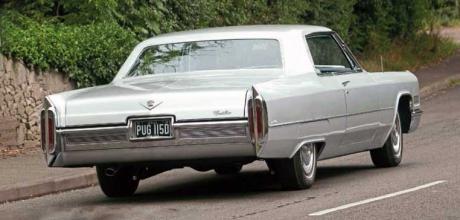1966 Cadillac Coupe De Ville
This beautifully preserved ’66 Coupe De Ville lived in Babylon, New York, all its life until John Lond got bored one Christmas and turned on his computer…
Words: Nigel Boothman
Photography: John Colley
From Babylon to Blighty
This is one of more than 50,000 two-door coupe Cadillacs built in the 1966 model year – 50,580, to be precise. The scale of the US auto industry can be mind-boggling to those raised in Britain; this quantity of Cadillacs would equip every single house, flat or any other dwelling in Gloucester or Rotherham or Watford with a new car. It’s probably enough to make every household in Derry, Paisley or Wrexham into a two-car family. And that’s just one body style from one division from one year.
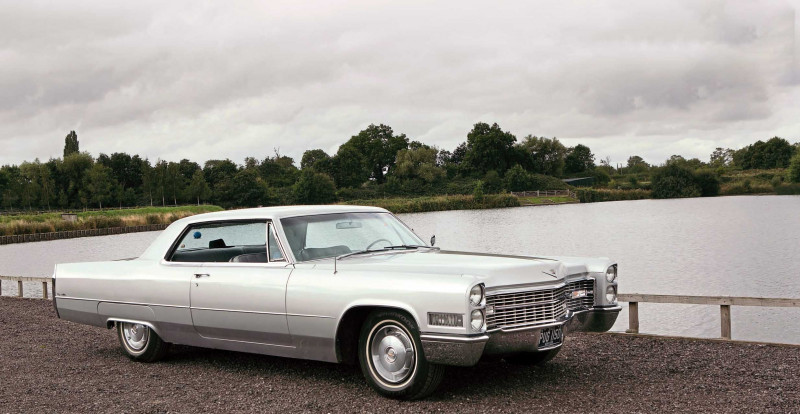
Cadillac didn’t even make that many cars compared with other divisions within GM, or with Ford, or with Chrysler’s mass-market offerings from Dodge and Plymouth. It gives a hint to America’s enormous economic boom which was still going so strongly in the mid- Sixties, with only the odd hiccup since the end of the war. More than 50,000 people felt able to spend well over $5000 on a luxurious new coupe, which takes out all the carriage-trade purchases of limousines and large sedans. These customers were buying personal cars, to use an industry phrase coined the decade before. Something the owner-driver acquired as a bit of an indulgence.
“IT RIDES BEAUTIFULLY SMOOTHLY AND HAS PLENTY OF POWER, SO IT’LL POOTLE ALONG HAPPILY AT 70MPH WITH NO TROUBLE. I TEND TO USE 60MPH AS IT FEELS MORE RELAXED… ”
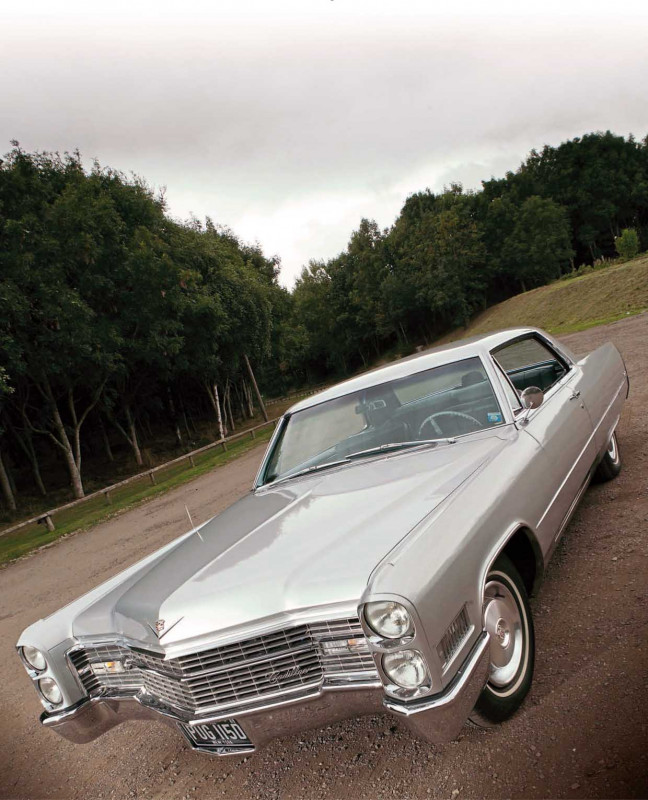
Perhaps this explains why the survival rate seems to be quite high. Still a tiny fraction of the proportion, for example, of 1966 Rolls-Royces and Ferraris that escaped the scrapper, but far better than the Ford, Chevy and Plymouth station wagons from the same year. Coupe De Villes often became Sunday cars, wafting occupants to church or across town to see the grandkids for lunch. Even with all that in mind, it’s strange to think of the many fates of those 50,579 other ’66 Coupe De Villes that didn’t wind up in John Lond’s garage.
John had been a Corvette guy, owning a ’79 C3 T-top and a ’65 Sting Ray convertible. He had kept each car for around 12 years, so after 24 years of low-down sports machines, he “fancied something more comfy”, in his own words. So it happened that during the Christmas break in 2014, John clicked on to American eBay and began scrolling through the listings. There was a very good-looking Cadillac with reams of photos and a video too. John knew straight away it was worth pursuing, so he got in touch with the vendor.
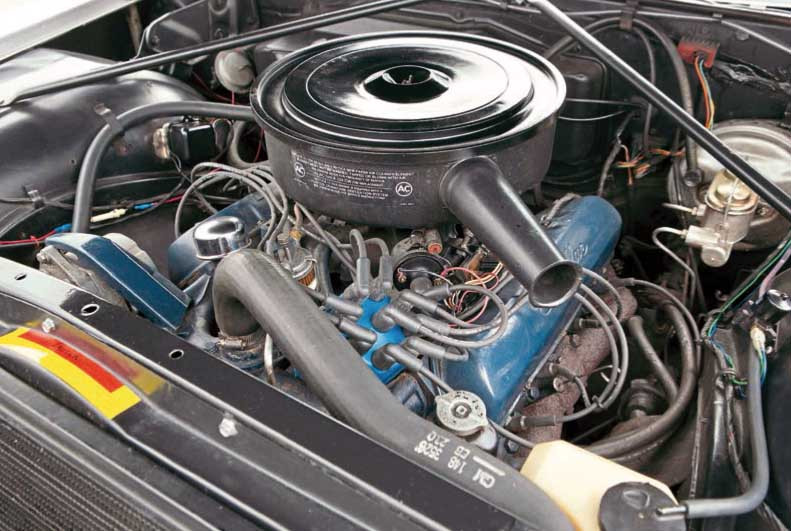
“We had a long conversation and he assured me it was as good as it looked,” says John. “I was pretty confident in him and in the photos, so I took a chance on it and bought the car in early January 2015. Happily, it worked out fine. I arranged all the shipping through Golden Chariots (www.goldenchariots.com Tel. 01902 790797) and they delivered it to my door. It was with me by the middle of February.” There was one unnerving moment when the Cadillac appeared to give the UK a body-swerve and set off elsewhere, as John recounts.
“I had a tracking number for the shipment, so I could see the progress of the ship on my computer as it went from port to port. I saw it leave the US and then it disappeared in the mid-Atlantic, which is expected as there’s no signal for the tracker out there, but it reappeared again and was soon heading for the south coast. Only it went right past Southampton and on to Hamburg! For some reason, the Cadillac was unloaded there, put on to another ship and came back to Southampton.”
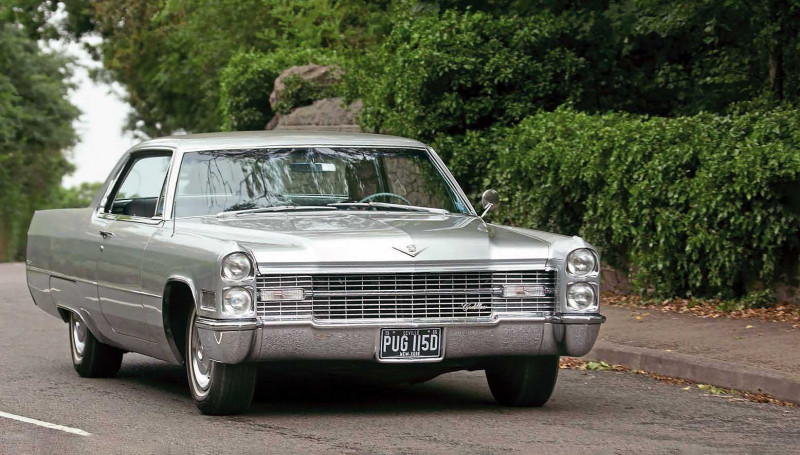
So what had John bought? The thing which really sets this car apart from so many imports from the US is its past history. For whatever reason, many American classics arrive here with very little known about their past and even less actually present in the history folder – even with good, original cars. Do previous owners keep the old documents as a souvenir? Or is the paper history of a car just less valued in the US than it is here? Answers to the editor, if you have them! John’s new car is a lucky exception – he has the original handbook and service book, plus receipts from local garages.
As mentioned in the title of this piece, the car lived its life in Babylon, New York, a small settlement on the south shore of Long Island. As an aside, it’s 10 miles due south of Elwood, the town in which my family lived in the early Eighties. We would drive down Deer Park Avenue in the summers and past Babylon, over the South Bay Bridge to Jones Beach. Perhaps this long, cool Cadillac was one of many Sixties American classics that caught my imagination as I wandered through those sandy car parks.

The lady who bought this car new ordered it from Atherton Cadillac in Bay Shore, just west of the Robert Moses Causeway from Babylon. She chose an unusual combination of extras, spending $4 on door guards, $85 on a six-way power seat, $165 on an AM radio, $57 on whitewall tyres and $52 on Soft-Ray tinted glass. Rear seat-belts at $18 were certainly not a common fitment in 1966 and there were only two of them to go with two belts in the front, totalling four for a car regarded as a six-seater, thanks to those two wide benches. Perhaps a few unruly children were expected as occasional passengers. If so, the little terrors would have been hot and bothered on days out at Fire Island, as this car is one of the 20% that were ordered without air conditioning. It was an expensive addition at several hundred dollars, but I can say from experience that tinted glass is not enough to stop your car turning into a pizza oven during a Long Island summer.
“The car was in unbelievable condition,” says John. “It stayed with that original owner until 2013, though it was stored after 2000. In 2013, she gave it to a friend who recommissioned and repainted it. I was sent a photo of the Caddy when it was extracted from its slumber and it actually looked very good, apart from the flat paint. This friend replaced various worn-out rubbers and did the brakes, as well as fitting four new tyres. The bill for parts and labour to recommission the vehicle came to $3662.46, excluding the tyres. It had done 87,000 miles, but it almost looked new when he’d finished.” Indeed, the car cannot have ever seen much use in winter, if any. Long Island gets cold, snowy winters and together with the damp, salty, seaside air at Babylon, it’s enough to rot most cars pretty badly if they’re exposed all year round. But not only is the Cadillac free of corrosion, it’s also survived without any apparent accident damage or dents.
Just as important, the state of the interior suggests that only clean and well-behaved children can ever have travelled in it − or else the owner took some very sensible precautions. “Clear plastic seat covers were fitted in 1978,” says John. “These were going yellow by the time I got the car, and they looked awful, so I removed them. The seats had benefited from the protection, but the covers couldn’t stop the seams getting tired and they let go soon after, so I sourced the correct fabric from America and a local trimmer fitted new panels in the front bench. Now it looks new again.” So does the trunk.
That’s the original carpet, and when John took delivery he found the car’s original 1966 cross-ply tyre on the spare wheel, too. It’s now replaced with something safe to use, as John does enjoy driving the car. He’s made minimal other changes, but has added a modern radio unit with a USB connection. Under the bonnet, the long-lived 429cu in V8 runs very nicely on aftermarket electronic ignition, and there is a new set of shock absorbers which arrived from Rock Auto (www.rockauto.com ) in the States for a ridiculously reasonable £98 for a set of four, including tax and shipping.
“They’ve firmed up the ride to what it should be,” says John, “so it wallows less than it did. It rides beautifully smoothly and has plenty of power, so it’ll pootle along happily at 70mph with no trouble. I tend to use 60mph as it feels more relaxed. All four windows are electric, with the rear windows pivoting backwards to disappear rather than sliding straight down. Then you get the fully pillarless look which is maybe when the car is at its best. I service it every year, but otherwise it just works – it goes to shows at weekends and gets enjoyed.”
In John Lond, this Coupe De Ville seems to have found another owner like its first – someone who will use the car regularly and look after it carefully, providing the two main conditions which allow a car to survive so well. As a man who keeps his cars for a long time, John is the perfect custodian for this wonderful glimpse of the good life from 55 years ago, in our opinion. Maybe it was a 50,000-to-one chance, but this graceful two-door Cadillac has got lucky, once again.
Options include power seats, but no A/C. Plastic covers protected the seats until the car arrived in the UK. ‘Cathedral’ tail-lights a Cadillac trademark. Cadillac adopted stacked lights in ’65. 429 cu in V8. A total of 50,580 twodoor coupes were built in 1966.


